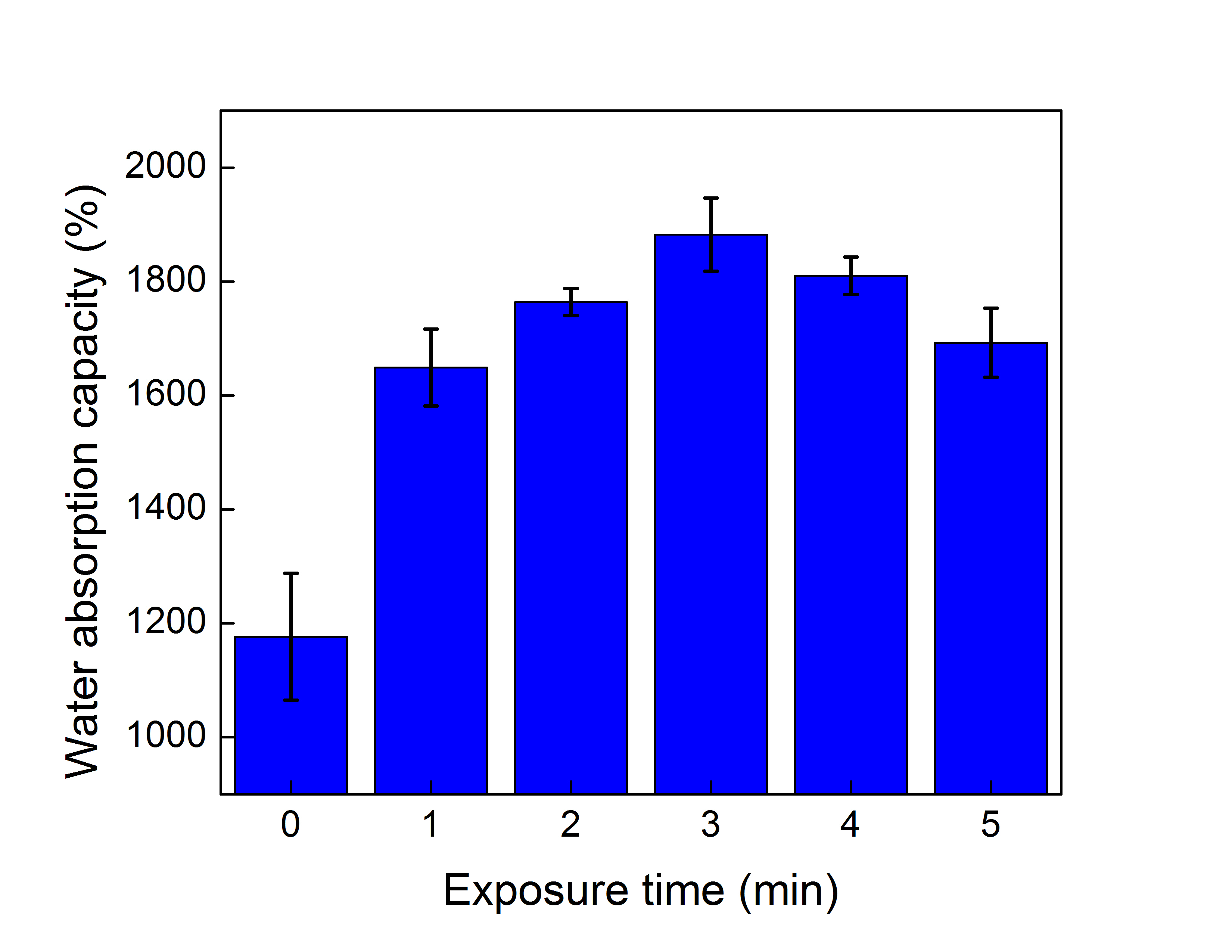Introduction: In the past nursing practice focused on the need for maintaining open chronic wounds in a dry condition. This was thought to reduce the incidence of infection and blood loss, and prevent the accumulation of exudate that would slow the rate of wound healing. However, in the 1960’s George Winter proposed a moist wound healing theory which totally revised the approach to wound management[1]. His experimental study found that a moist environment accelerates re-epithelialization, promotes granulation tissue formation, reduces scarring and is preferred for optimal healing. In the current study, a novel textile based debridement material has been designed and fabricated using pile knitting technology followed by a series of technical finishing. According to Winter’s moist theory, debridement materials should have good water absorption behavior so as to function efficiently. The main goal of this study was to investigate the water absorption properties of this new textile based debridement material.
Materials and Methods: Prototypes of the textile based debridement material were knitted from polyester staple fiber and polyester draw textured yarn on a circular pile knitting machine, followed by back-coating, heat setting and cutting. Radio frequency plasma surface treatment was performed under different conditions, such as exposure time, power and gas type, to improve the wettability of the knitted materials. Then a capillary water absorption test[2] was carried out to check the extent to which hydrophilicity was induced by the plasma treatment.
Results and Discussion: Generally, the water absorption capacity of the textile based debridement material increased after plasma treatment, which indicates that RF plasma treatment is an effective method to improve the wettability of textile based debridement material. The water absorption capacity of the textile based debridement material first rose and then fell with the incensement of exposure time to oxygen from 1 min to 5 mins (Fig. 1). While by increasing the power of plasma treatment, the water absorption capacity of the textile based debridement material reached the highest level at the power of 150W, then it decreased slightly and was kept at a steady level around 1800% (Fig. 2). The type of atmospheric gas, whether oxygen or helium influenced the waster absorption capacity as well (Fig. 3).

Fig.1 Water absorption capacity before and after plasma treatment in oxygen at different exposure times.

Fig.2 Water absorption capacity before and after plasma treatment in oxygen at different power levels.

Fig.3 Water absorption capacity before and after plasma treatment in oxygen and helium at different exposure times.
Conclusion: By evaluating the water absorption capacity of the textile based debridement material before and after different plasma treatment conditions, we have been able to demonstrate how to improve the water absorption capacity of the textile based debridement material. Further work will be required to establish a standard method to evaluate the dynamic water absorption phenomenon which will provide a better prediction of how the prototype of textile based debridement material function during clinical use.
This work was supported by the Chinese Universities Scientific Fund (CUSF-DH-D-2014008) and the 111 project “Biomedical Textile Materials Science and Technology” (B07024). In addition, the State Scholarship Fund from the China Scholarship Council is gratefully acknowledged.
References:
[1] Winter GD. Formation of the scab and the rate of epithelization of superficial wounds in the skin of the young domestic pig [J]. Nature, 1962, 193: 293-294.
[2] Ramesh Babu V, Ramakrishnan G, Subramanian VS, et al. Analysis of Fabrics Structure on the Character of Wicking [J]. Journal of Engineered Fibers and Fabrics, 2012, 7(3): 28-33.